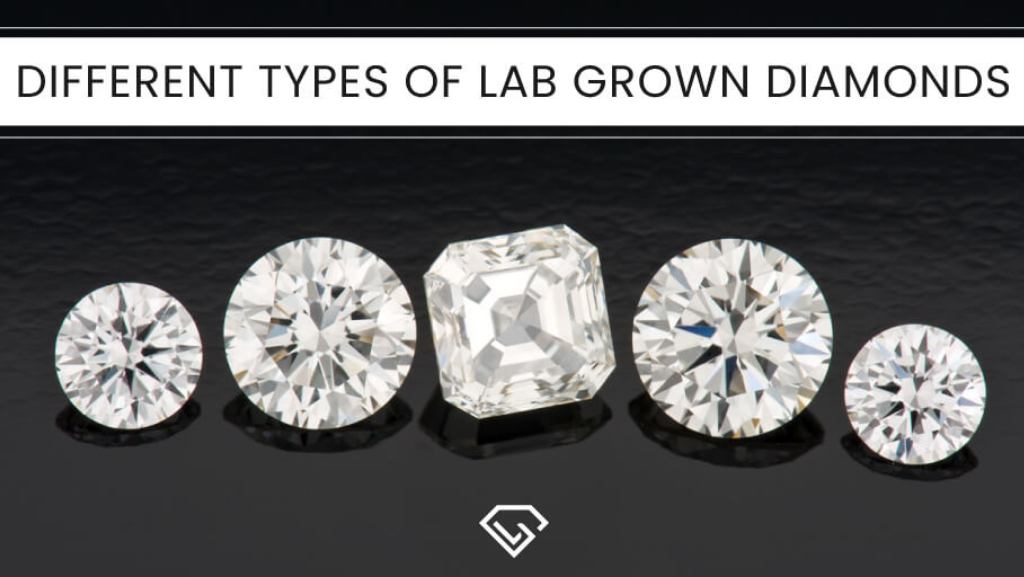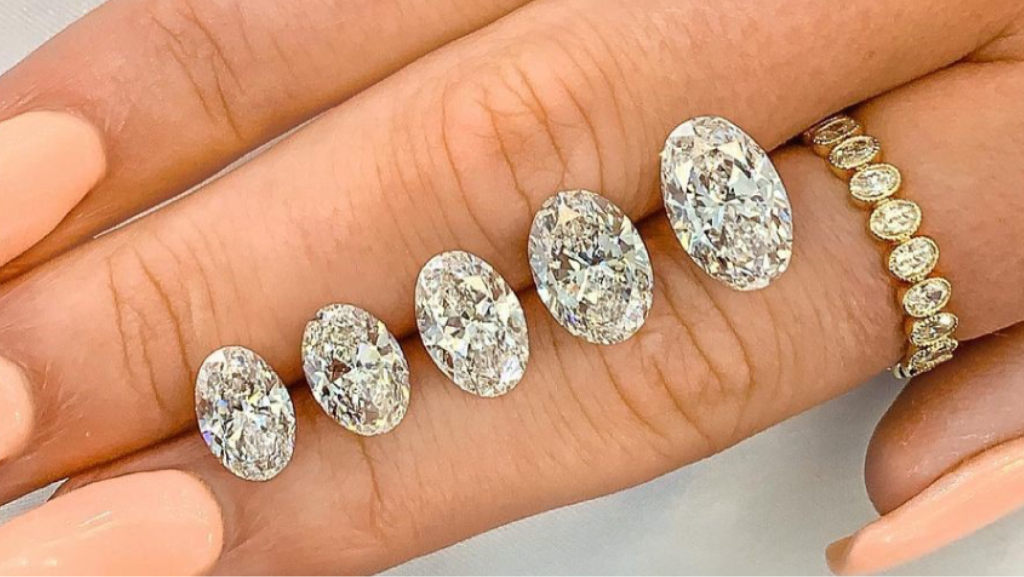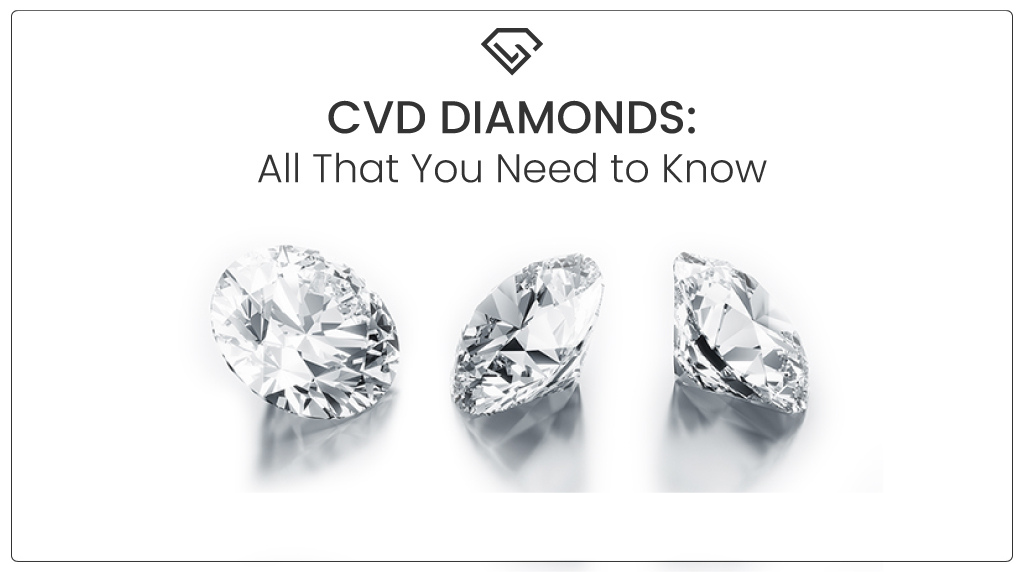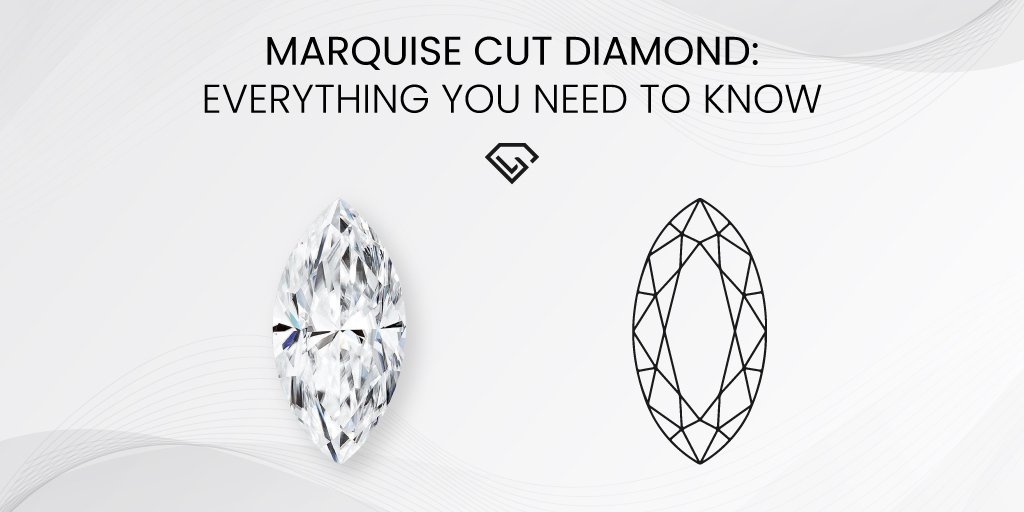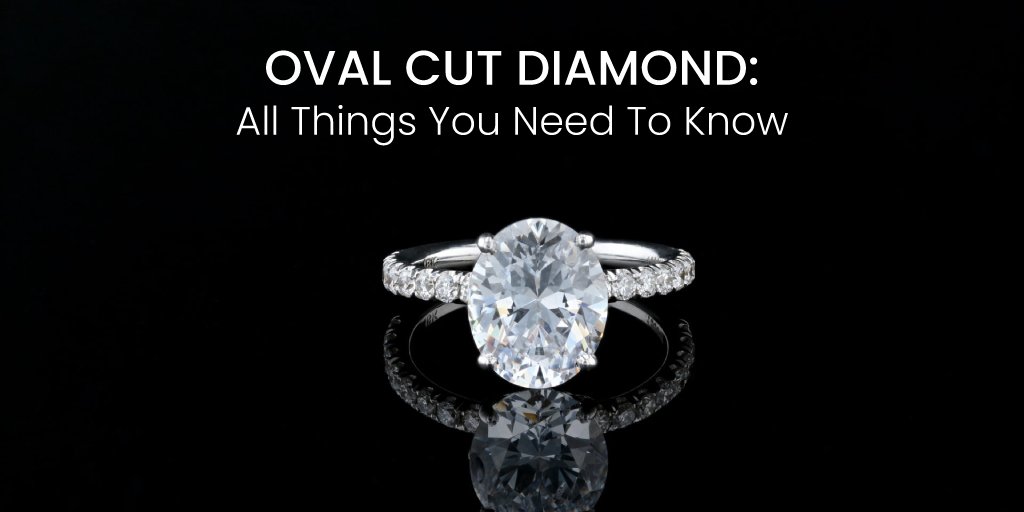Emerald Cut Diamond: Everything You Need to Know
Deciding which accessory would best suit your beloved someone is a task involving creativity and confusion. But when the options are irresistibly beautiful, it gets a bit difficult to choose the best jewel from the lot.
An emerald cut diamond brings outclass strength and the latest trends. Modern boss ladies like Beyoncé adore the shape, with many ladies respecting its capacity to show quality more than other fancy shaped diamonds.
Just like you want the best for your special one. With this objective in mind, we have compiled this article on everything related to emerald cut diamonds so that you can get closer to understanding the 4Cs of an emerald lab diamond, and what type of ring setting would suit you or your partner’s hands the best.
What is an Emerald Cut Diamond?
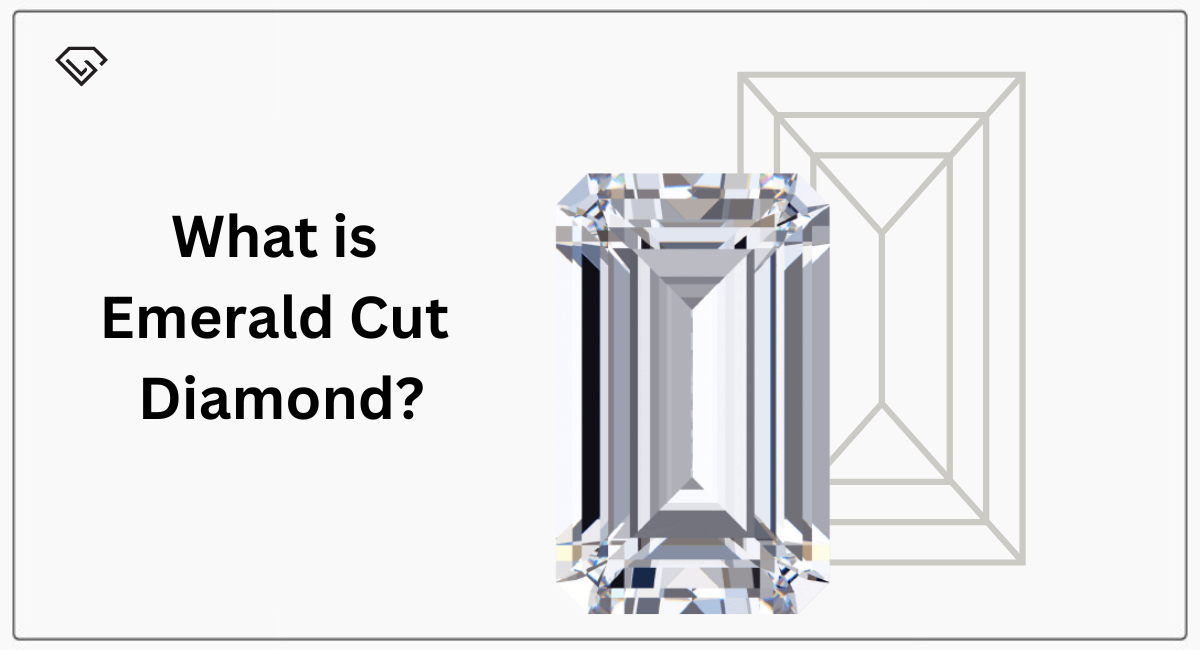
A human being’s personality has many layers defining them variedly, just like the step-cut layering style of emerald cut diamonds possessing perfection in each layer.
The emerald cut diamond is a rectangular-shaped diamond formed in a long structure prevailing a curvy cornered look with several facets and layering, allowing the quick as well as an easy reflection of light that delivers a shiny and fancy look.
According to the GIA, emerald lab diamond is not assigned under the cut grade category due to its fancy and several faceting looks but it’s considered only for polish and symmetry grading.
Under the depth category, 72%-58% is the enormous variation for excellence which reflects the light falling on it as well as signifies the openness inside the core.
Under the table category, the calculation of the top surface of the emerald which is plain like a slate is excellent with the variety of choices from 72%-62% in the table. It is abided by the inclusion of the step-cut layering that leaves a bow-tie effect over the top but, commonly, some people consider it as an advantageous factor of emerald diamonds. There is no room for imperfection as it might be visible in the stone, which makes it a symbolism of perfection.
Shape
Carat
Cut
Color
Clarity
Price
emerald
1.02
Ideal
E
VVS2
$271 $258
View
emerald
1.33
Ideal
E
VVS1
$402 $383
View
emerald
1.00
Ideal
G
VS2
$234 $223
View
emerald
1.06
Ideal
E
SI1
$336 $252
View
emerald
1.08
Ideal
H
VS2
$931 $698
View
emerald
1.07
Ideal
F
VS2
$339 $254
View
emerald
1.23
Ideal
D
VS1
$461 $346
View
emerald
1.52
Ideal
D
VS2
$552 $414
View
emerald
1.62
Ideal
D
VS2
$584 $438
View
emerald
1.99
Ideal
E
VS1
$651 $488
View
emerald
2.00
Ideal
E
VS1
$707 $530
View
emerald
2.00
Ideal
F
VS1
$680 $510
View
emerald
2.03
Ideal
E
VS1
$717 $538
View
emerald
1.28
Ideal
E
VVS2
$477 $358
View
emerald
1.00
Ideal
D
VS2
$373 $280
View
emerald
1.29
Ideal
F
VS2
$395 $296
View
emerald
1.45
Ideal
F
VS2
$435 $326
View
emerald
1.50
Ideal
E
VS2
$488 $366
View
emerald
1.10
Ideal
H
VS1
$947 $710
View
emerald
1.23
Ideal
I
VS1
$1051 $788
View
History of Emerald Cut Diamond
Between the years 1920 and 1939, the emerald cut was immensely popular; they had just started to include a greater number of facets. The new emerald cut (which is sold in markets today) took on its current shape around the year 1940.
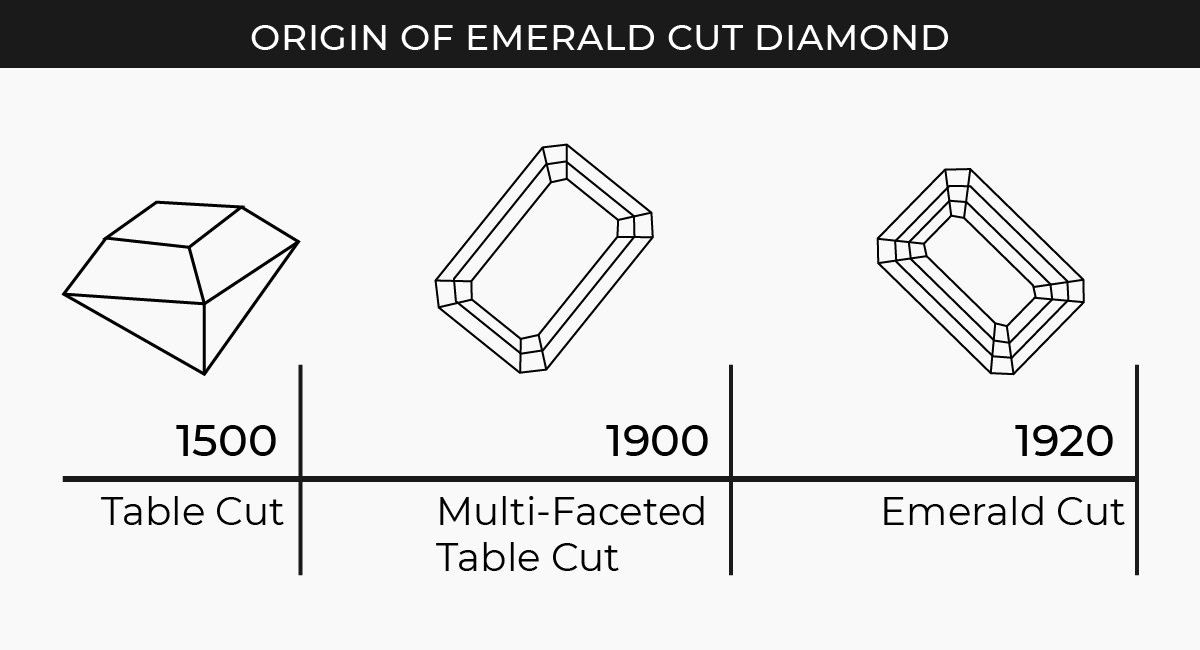
The emerald diamond is thought to be one of the first diamond and gemstone cuts that were explored and worn as jewelry. The emerald gemstone inspired the name the ‘Emerald Cut Diamond’. They cut the stone in a rectangular form to preserve as much of the diamond as possible. This shape has a history dating back over half a century, when the diamond was cut in the shape of a rectangle, earning the name emerald cut diamond to itself.
Over the years, emeralds have grown extremely fragile, making severing them extremely tough. People began looking for a means to clean the diamond without harming it as a result. They lacked the awareness and resources that we have today.
The history of the emerald cut dates back to the 1500s when stonecutters first developed the rectangular shape of the emerald diamond cut and worked on the cutting procedure for emerald stones. This new cutting approach was successful because it lowered the pressure given to the stone during the cutting process, preventing chipping in emerald gemstones that are simply more fragile due to their natural and numerous inclusions.
During the era of art deco, once again, emerald shape diamonds were glorified and nurtured. The official term “emerald cut” was used in the 1920s for the first time. It was the emergence of newness and styling.
The design was adored by people who loved wearing or buying jewels, this included the women population in a great number. Since this progression in the jewel design industry, emerald cut diamonds have remained a popular centerpiece stone for wedding rings or engagement rings. It is still a sought-after diamond cut that has stood the test of time in terms of both durability and style.
About 4Cs: Emerald Cut Diamond
The attractiveness of emerald-cut diamonds is quite clear. Elegant long lines lend them a discreet look, while curved corners provide a touch of timeless glamor. But the following can also be defined by the 4C parameters i.e. cut, clarity, color, and carat.
As mentioned earlier the new emerald cut took on its current shape around 1940, which included more facets compared to the emerald cut diamond of the preceding years. In today’s world, however, this diamond cut is usually used to show how clean the stone is and what a beautiful tint it has. There’s no room for flaws in this cut. In addition, defects are easily seen in the stone’s reflection, if any.
Emerald Diamond: Clarity
Diamonds gain clarity characteristics–slight imperfections noticeable under 10x magnification–when they are formed deep in the soil. These clear features might not be visible to our eyes, but they do very much exist.
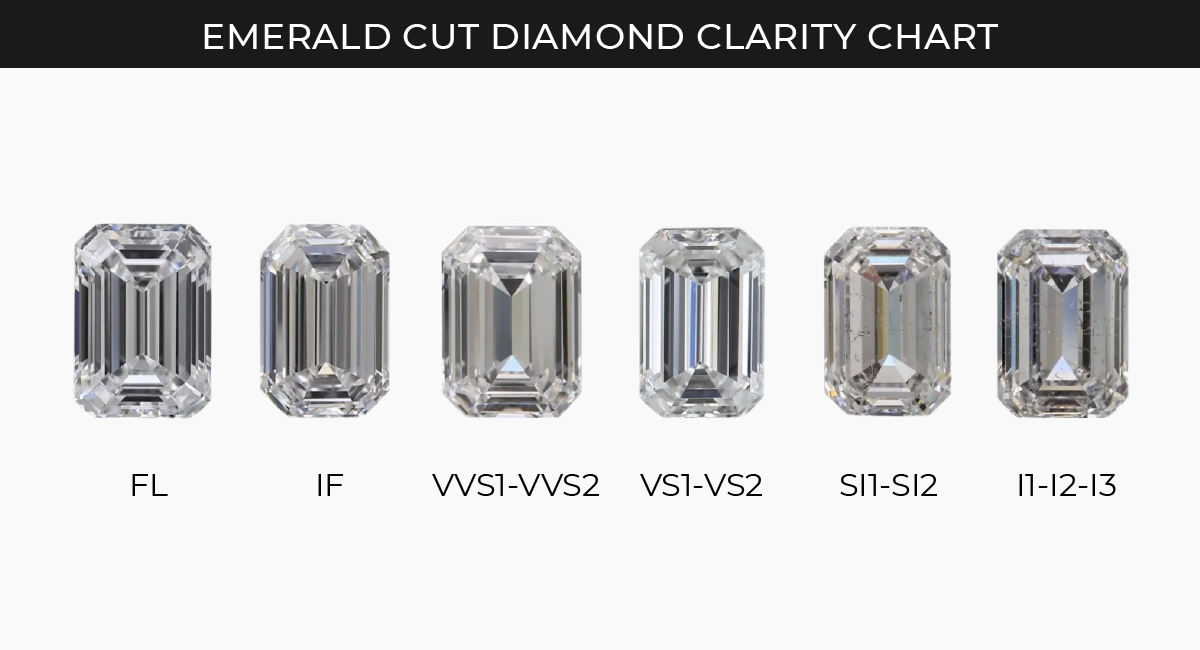
The GIA Transparency scale ranges from the best (no inclusions) to the worst (inclusions). Their titles will be as follows:
- Flawless (FL)
- Internally Flawless (IF)
- Very Very Small Inclusions (VVS1)
- Very Very Small Inclusions (VVS2)
- Very Small Inclusions 1 (VS1)
- Very Small Inclusions 2 (VS2)
- Small Inclusions 1 (SI1)
- Small Inclusions 2 (SI2)
- Inclusions 1 (I1)
- Inclusions 2 (I2)
- Inclusions 3 (I3)
When looking at a lab grown emerald cut diamond it is vital to pay attention to what level of clarity is sitting at. The lower the clarity the lower the price and vice-versa.
Emerald Diamond: Cut
The emerald-cut diamond is distinguished by its elongated, rectangular shape and carved step cut, which features straight linear facets aligned parallel down the stone. The emerald cut diamond’s corners are usually trimmed to promote cohesiveness and avoid fissures.
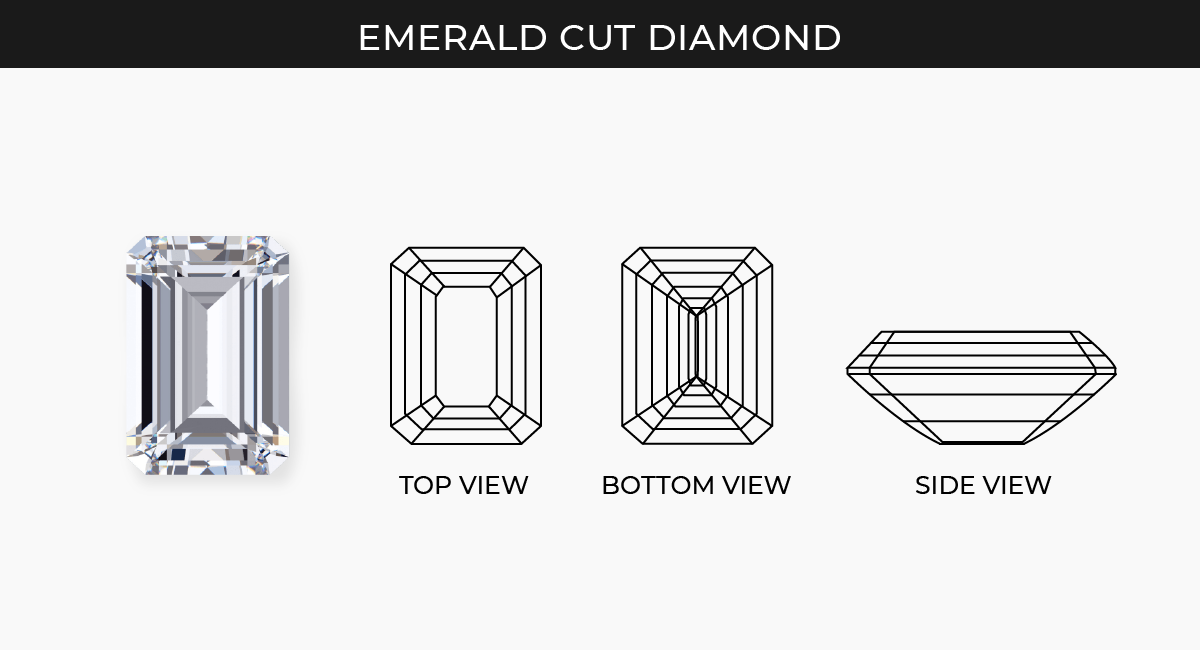
Stack terraces and parallel facets are used in the cutting process to create a sophisticated jewelry pattern that varies from the cutting techniques observed on round and cushion diamonds.
Emerald Diamond: Color
Color will be more obvious in an emerald cut, just like clarity. Color is more simply more visible in the large table and step cuts than in other sophisticated designs.
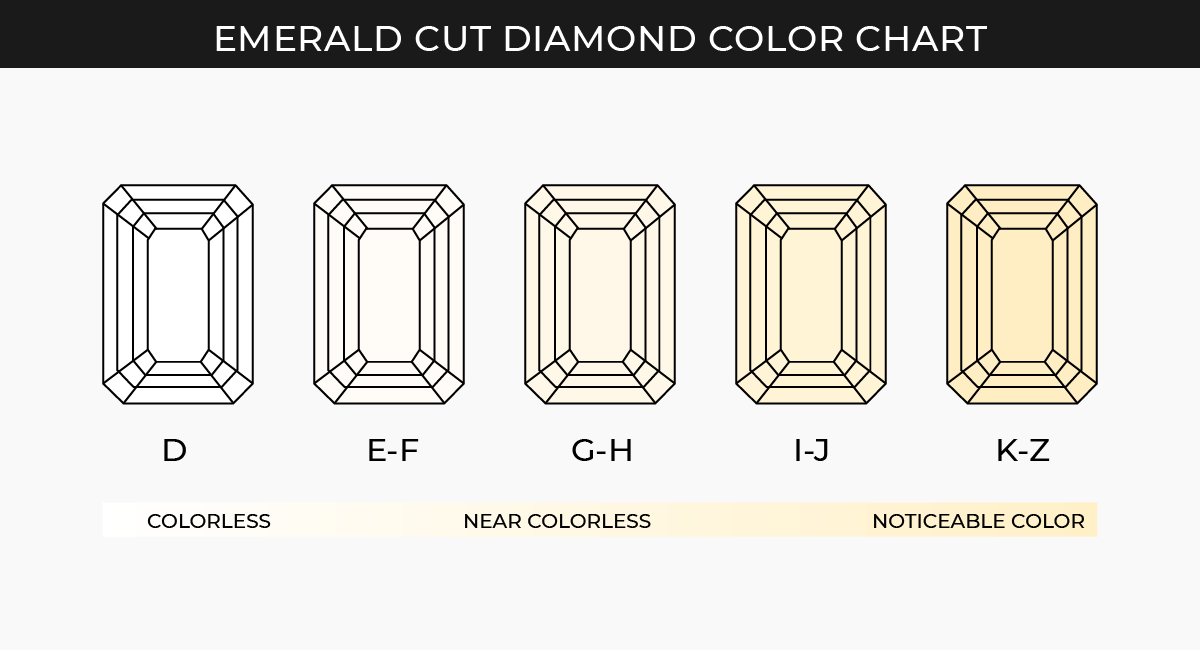
A yellowish tint will be visible in an emerald cut diamond of color grade I or lower. A tint of color grade G or higher is less likely to be noticed by the human eyes. In an emerald cut, it’s ideal to keep at or above a G color for the finest quality and value.
Finally, think about the metal in your surroundings when it comes to color. A G color grade or better will radiate with a white hue if you choose a more cold tone of platinum or white gold.
Emerald Diamond: Carat
Emerald cut diamonds also have better cutting productivity, which means that when a raw diamond is cut into a polished emerald cut, the least amount of weight is lost. As a result, cutting an emerald cut is less expensive than cutting a round brilliant diamond.
Emerald cuts are frequently accessible, despite their lower demand than the most popular round diamond. It should also be rather easy to find emerald cuts in a number of carat sizes, including larger ones. If you are unsure about diamond carat size, refer to this diamond size chart for a comprehensive guide to help you identify the size accurately.
Large carats are available, and while the quality will vary, you can expect the price to rise substantially with each full carat climb.
Emerald Shape Diamond Length to Width Ratio
The length to width ratio of a diamond actually tells about how squared or long its shape is. The ratio can be calculated by the division of the length and breadth of the diamond.
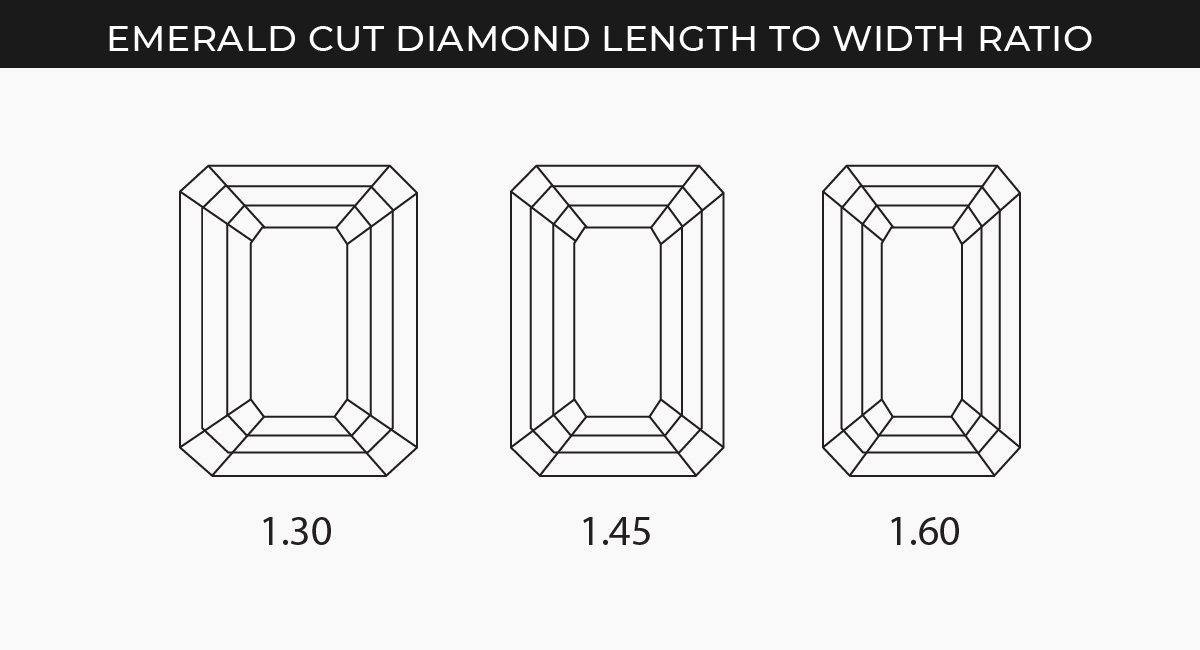
The most well-known emerald shape ratio is 1:5, which is the absolute perfect ratio in order to make the stone rectangular in shape, which also embraces the jewelry when it is worn. In green emerald stone finger bands, this ratio is fairly common and most customers demand this ratio for their special jewel.
In this style, women’s fingers appear longer and more graceful. The cut’s form is identical to the diamond’s natural shape. Also, there is a minor reduction in stone. This also makes the emerald very well-known in terms of pricing.
Pros & Cons of Emerald Cut Diamond
Factors that are advantageous or committing towards loss, both play a vital role in the decision-making process for each element in the universe.
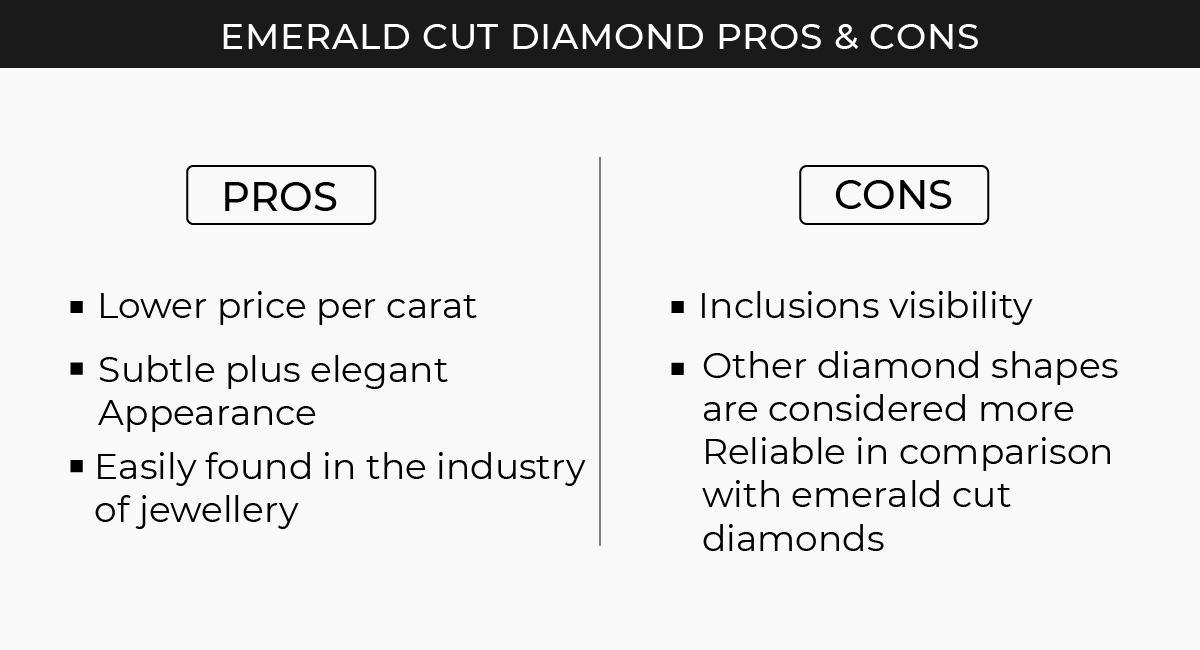
PROS
- Lower Price Per Carat: In comparison with other diamond shapes, emerald lab diamond is preferably lower in cost whereas its size is quite compelling. It’s cheaper due to its less demand in the industry and high yield of cutting which reduces its weight. These two factors make this diamond cheaper than others.
- Subtle Plus Elegant Appearance: The cuts, proportion, layering, color, clarity, and glassy look, all together make it the most subtle and suitable diamond, prevailing an elegant as well as a classy glance.
- Easy to Find: Emerald cut diamond is a popular diamond that can be easily found in the industry of jewelry. It is considered one of the topmost choices of people which assures its availability in the market.
CONS
- Inclusions Visibility: As we know, emerald cut diamonds are glassy which gives it a shiny effect but that comes at a disadvantage as well, that is, inclusions in the diamonds are quite noticeable at 10x if it is not of a higher clarity grading.
- Comparison: Other diamond shapes are considered more reliable and commendable in comparison with emerald-cut diamonds, due to their long existence and vintage look.
- Emerald Cut Bow Tie Effect: As many diamonds cut the “Bow Tie” effect happens in emerald cuts. If a polisher places the facets incorrectly, the light doesn’t reflect in the proper way.
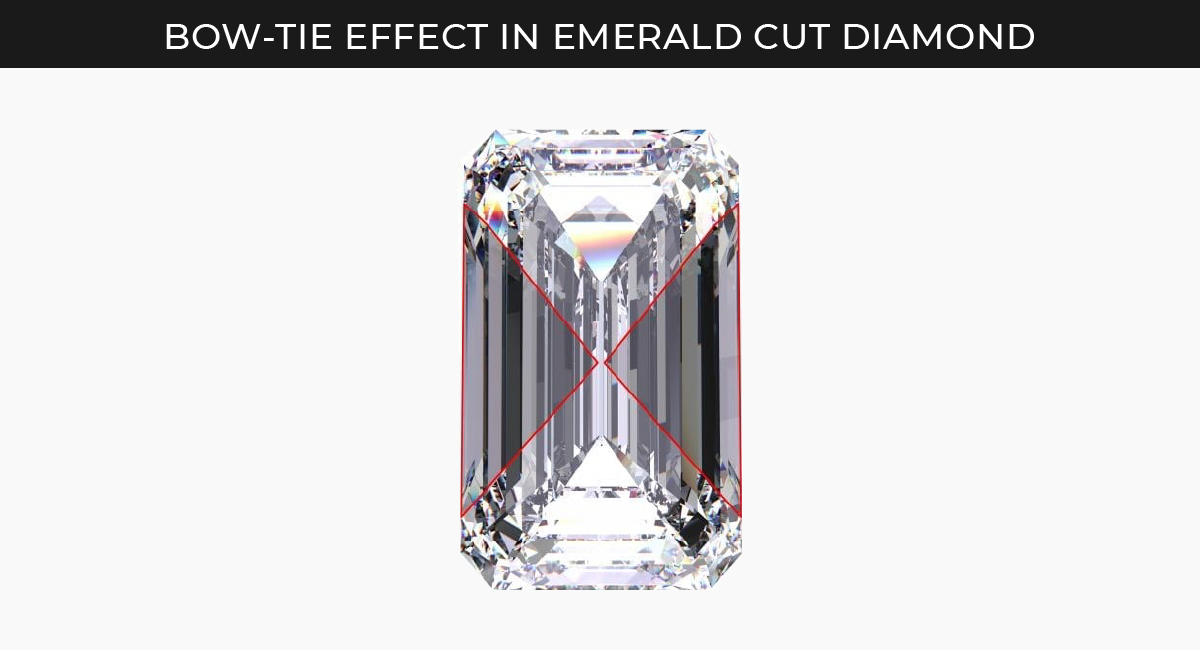
How to Choose an Ideal Emerald Cut Diamond
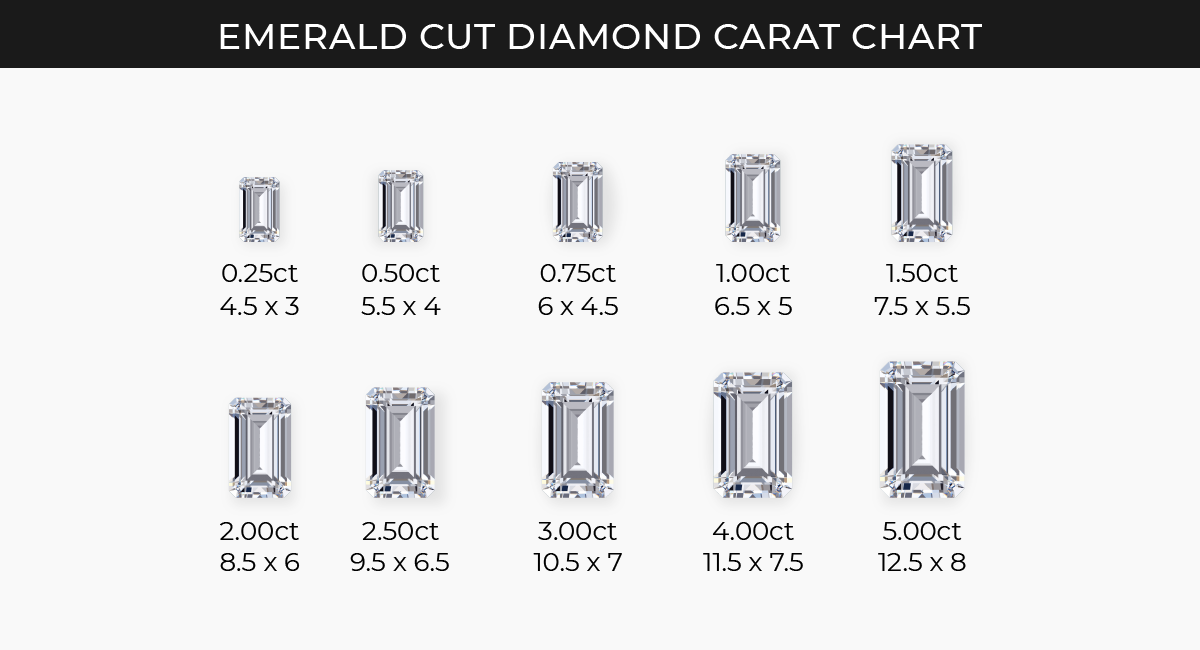
Emerald-cut diamonds can be judged on a few definite factors for considering them as an ideal diamond for purchase and utilization.
Due to its inclusions and layering, lab-grown emerald cut diamond prevails a bow-tie effect in the middle of the diamond which increases its darkness in the color and the quality seems to deteriorate due to less light reflection through the diamond.
For an ideal shape and size of the diamond, approx. A 1.30 – 1.50 ratio must be chosen or a ratio of 1.40 is considered best which also provides a good square shape likewise. For a rectangular and elongated shape, the ratio can be increased accordingly, which will meet the requirements as necessary.
Emerald cut diamond is an open table with a layering style whereas cushion cut diamond is larger in size and shape as compared with emerald cut, and has a dense structure with confusing incisions in it. Emerald-cut diamonds are less expensive as well as better for the hand due to their usual size and better quality. Cushion cut diamonds are slowly getting the pace of popularity but still need to be reviewed before purchase due to their mystifying structuring.
Similarly, asscher cut diamond is laborious to find due to its aesthetic nature from the Art Deco era, which made it more of a vintage diamond and has less popularity as well. Showing off inclusions under the open table is one of the most similar characteristics adored by both diamonds in their unique ways. Both of them have their personality which makes them a little different from each other and increases their value variously.
These few factors must be considered as the biggest factors for considering the best and ideal emerald shaped diamond.
Also Read: Cushion Cut vs Emerald Cut Diamonds: Which one is right for you?
Prices of Emerald Cut Diamonds
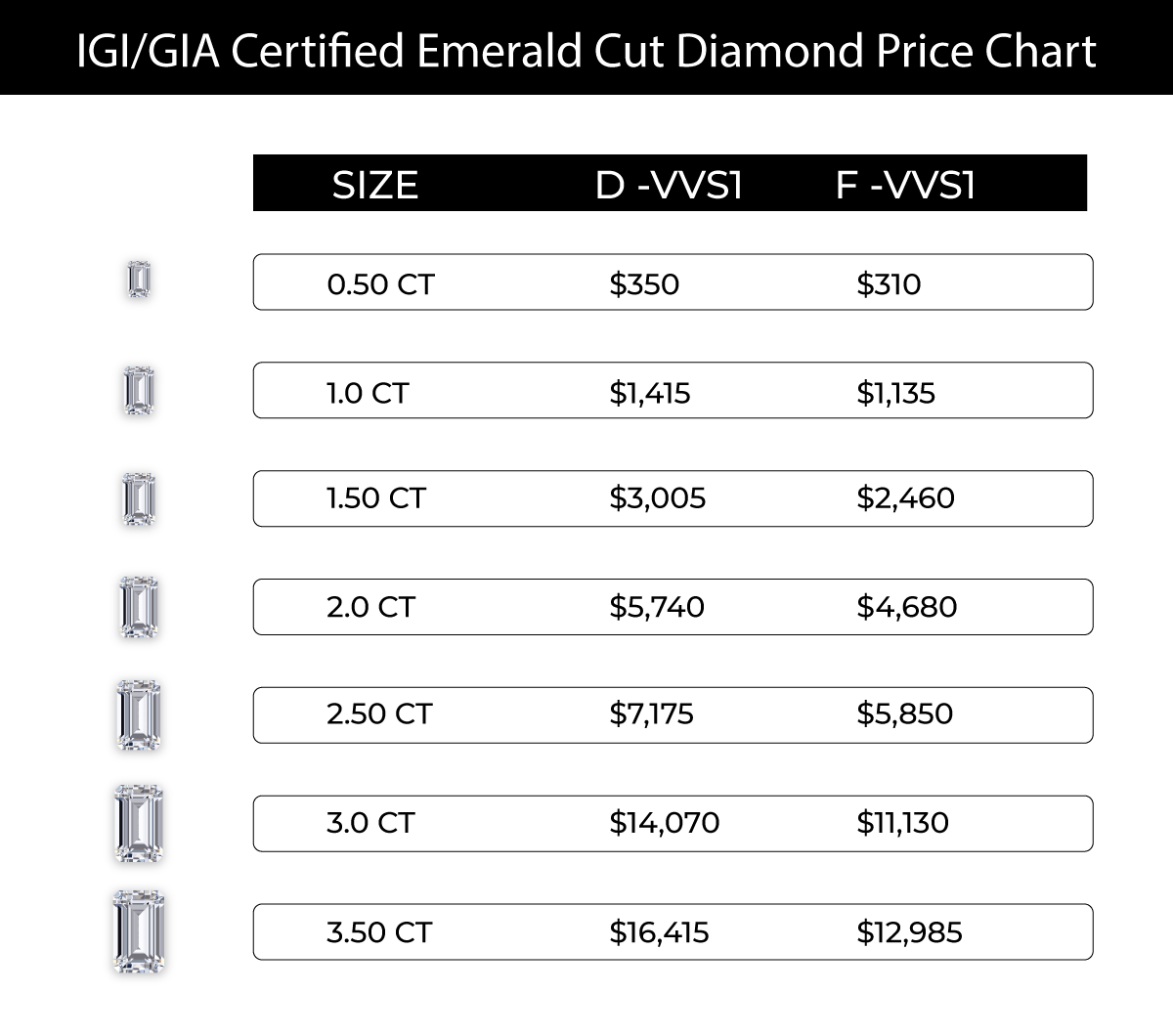
Emerald cut diamond rings are cheaper than other diamonds even when they are quite valuable. It’s due to two factors: decreasing demand in the market and a higher yield on cutting. The lab grown emerald cut diamonds are not so popular in the market these days due to their vintage look and origination era.
Over that, during the cutting or shaping of a diamond, most of its particles are converted into fine dust which gives the diamond a particular shape and lighter weight which makes it flimsy and reduces the cost value.
While buying an emerald cut, one must be a little careful due to its glassy nature which doesn’t allow it to hide most of its inclusions and makes it appear darker in color, and reduces the effect of light reflection.
These small characteristics of diamonds must not be neglected and should get more attention for better and efficient purchases. Emerald cuts are not a bad choice due to their inclusions but their clarity makes it valuable which also reduces the money value in the market by per carat. It is anyhow a good deal for engagement or casual rings.
What Is the Best Setting for an Emerald Diamond?
Emerald cuts work well in a variety of styles, but they’re particularly well-suited to more subdued settings. Emerald cuts are ideal for three stone settings and suit nicely with solitaire and simple pave settings.
Not every emerald cut diamond is well suited for each design so it is essential to know which design emerald diamond engagement rings is best for your hands.
Emerald Cut Diamond Eternity Band
An emerald-cut diamond wedding band features a continuous row of emerald diamonds set all around the band, creating a unique and elegant design. The choice of metal for the band, such as white gold, yellow gold, rose gold, or platinum, can further enhance the aesthetic appeal of the ring.
Solitaire Setting for Emerald Cut Diamond
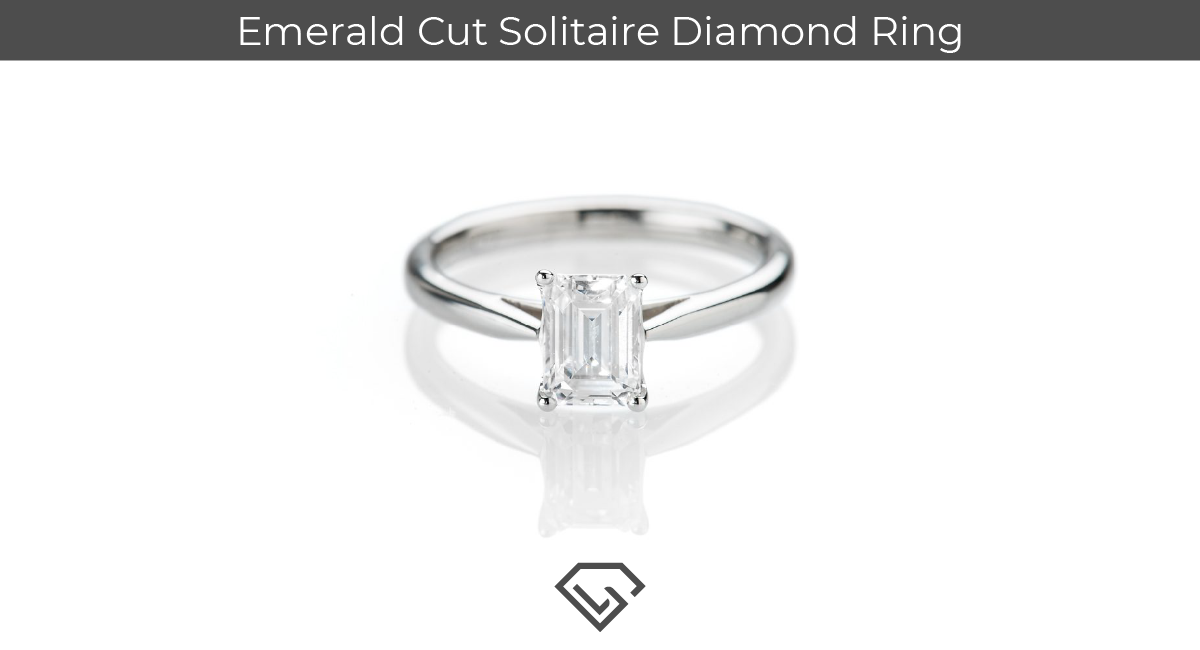
Solitaire is one of the most beautiful settings or representations of showcasing a worthy emerald diamond ring. The elegant appearance of an emerald shape diamond is amplified by a solitaire design in a perfect 1:5 ratio proportion.
The reason behind this statement is that the design allows light to get inside the diamond and showcase a beautiful and rich look. It not only showcases a lovely diamond shape but amplifies its beauty by adding a sober touch to the jewel in your fingers.
Pave Setting for Emerald Cut Diamond
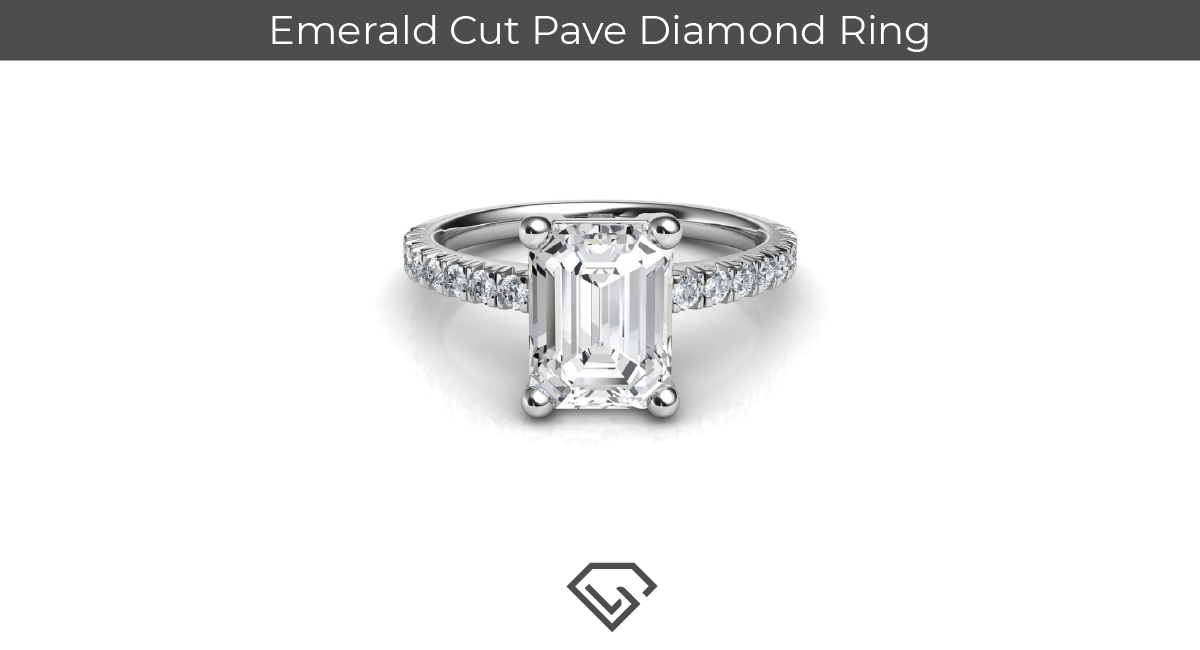
Another beautiful setting or jewel design for an emerald cut diamond ring is a paved design. This setting will enhance the appearance of the emerald lab diamond to a great extent. Unlike solitaire, it focuses on the center of the diamond to add a sober and attractive look.
It’s not the diamond itself, but the setting of the ring is called pavé. Each of the small diamonds in a pavé setting is held in place by metal droplets, sometimes called tiny prongs/ beads. A pavé diamond band is essentially a design in which several little diamonds are put closely together with little space between them.
Small amounts of precious metal beads (also called prongs) are used to hold these tiny diamonds in place.
Bezel Set Emerald Cut Diamond Ring
In this style, the metal forms a complete encircle around the diamond, ensuring a secure hold. The bezel setting not only imparts a modern and streamlined appearance but also serves to safeguard the edges of the diamond.
When combined, the bezel setting and emerald shape create a beautiful and harmonious ring design. The bezel adds a touch of contemporary flair, while the emerald cut enhances the diamond’s natural brilliance.
Three Stone Setting for Emerald Cut Diamond

Emerald diamonds look great in a three stone setting as well. The emerald in the center is flanked by two lesser stones that assist bring attention to it and enhancing its beauty.
The 3 stone emerald cut diamond ring is commonly made up of equal-sized stones, but they can also be made up of a larger stone in the middle, bordered by two smaller ones. Three stone rings, also known as trinity or trilogy rings, are a new take on the classic solitaire diamond design.
The side stones may not be the same size as the primary ones, but usually, the stones are relatively smaller in size to bring attention to the larger emerald diamond in the center.
How To Buy An Emerald Cut Diamond?
Know the 4 Cs understand carat weight, cut quality, color grade, and clarity. Determine the size of the diamond based on your preferences and budget. Insist on a diamond certification from a reputable gemological laboratory, such as GIA (Gemological Institute of America) or IGI (International Gemological Institute).
Consider the setting that complements the emerald cut, and don’t hesitate to negotiate the price, whether you’re purchasing in-store or online. We at Loose Grown Diamond want this experience to be special for you. Additionally, if you are confused about determining the price of your selected diamond, you can use our diamond price calculator.
Once satisfied with the diamond, the price, and the terms, proceed to complete the purchase, including the promo code.
Conclusion
The emerald lab diamonds have an exquisite form and distinctive stage cuts. Emerald cuts are a phenomenal option for those searching for a bigger diamond without it being heavy on their pockets. Since emerald-cut diamonds need close attention to the consistency of cut diamonds, we recommend that you have an expert analysis of your diamond prior to buying.
The main symbolism of strength conjoined with its name defines its empowerment and standards in the fashion industry. People buy it less frequently due to the differentiation in the choices, but overall it is a wise selection for experiencing newness in the jewelry inspired by the vintage collection.
FAQs
How much is a 2 carat emerald cut diamond
Generally, you can expect to pay anywhere from $2,000 to $50,000 or more for a 2-carat emerald-cut diamond, depending on market conditions.
How much does an emerald diamond cost?
Generally, expect a range of $800 to $50,000 or more for an emerald cut diamond.
Are emerald diamonds suitable for engagement rings?
Yes, emerald diamonds are a popular choice for engagement rings, offering a classic, unique, and sophisticated look.
Are emerald diamonds suitable for everyday wear?
Yes, emerald diamond rings are suitable for everyday wear, but it’s advisable to choose a durable setting.
Does emerald cut diamonds look bigger?
Yes, emerald diamonds can appear larger than other diamonds of the same carat weight due to their elongated shape and the way they distribute their weight.
Can I customize an 2 carat emerald-cut diamond ring?
Yes, LGD offers customization options, allowing you to create a unique emerald cut diamond ring using lab grown diamonds to suit your preferences and style.

